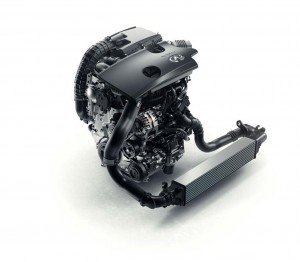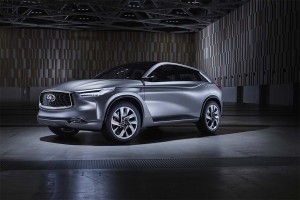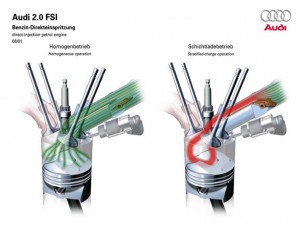Automakers around the world are struggling to cope with increasingly tough mileage and emissions standards, many experts warning that the only solution is to adopt electrified powertrain technology. But an all-new design Nissan and its luxury arm Infiniti plan to debut at the Paris Auto Show next month could keep the time-tested internal combustion in the hunt.
A concept many manufacturers have toyed with over the decades, Nissan’s new engine can adjust its compression ratio to deliver the optimum balance, at any particular moment, between power and fuel efficiency.
Dubbed the VC-T, short for Variable Compression-Turbo, the new engine is expected to make its debut in a new Infiniti model set to debut next year. But it will likely then find application across both the luxury marque and mainstream Nissan brand.
“VC-T technology is a step change for Infiniti,” said the luxury division’s President Roland Krueger. “It is a revolutionary next-step in optimizing the efficiency of the internal combustion engine. This technological breakthrough delivers the power of a high-performance 2.0-liter turbo gasoline engine with a high level of efficiency at the same time.”
(Americans strongly favor big increases in fuel economy. Click Here for the latest.)
Industry engineers are facing major challenges over the next decade. In the U.S., for example, federal regulators recently reiterated plans calling for the Corporate Average Fuel Economy, or CAFE, standard to reach 54.5 miles per gallon by 2025. Even with the credits and adjustments most manufacturers will receive, that is a difficult target that, many experts have suggested, will require the use of costly electrified propulsion systems, whether hybrid, plug-in or pure battery-electric.
The only internal combustion system that has, until now, shown the capability of approaching new government standards has been the diesel. But the Volkswagen emissions testing fiasco has tarnished the image of that technology, and diesels are expected to struggle meeting even tougher emissions rules.
“Diesel engine is a hot topic globally,” noted Kinichi, Tanuma, the Nissan engineer who led development of the VC-T. “We believe this new engine of ours is an ultimate gasoline engine that could over time replace the diesel engine of today,” Tanuma said, during a meeting with reporters.
Nissan isn’t the only automaker working on variable compression technology, but it is the first to commit to putting an engine into production.
Traditional gasoline engines are designed to a set compression ratio, generally somewhere between about eight to 11-to-one. That approach requires a variety of compromises, and manufacturers have had to use a variety of tricks to optimize performance, mileage and emissions – things like variable valve timing.
With the VC-T engine, compression can vary from anywhere from 8:1, for maximizing performance, up to 14:1, to improve fuel efficiency.
Nissan claims the turbocharged 2.0-liter, inline-four VC-T gets about 27% better mileage than the 3.5-liter V-6 that it will replace, even though the two engines make similar amounts of torque. The maker also claims the design is cheaper than the V-6 and can deliver similarly low levels of emissions such as smog-causing oxides of nitrogen.
(Ford lands $6 mil grant to develop better hydrogen fuel-cell tech. Click Here for the story.)
Whether other manufacturers will bring variable compression engines to market any time soon remains to be seen, but engineers are working on a number of other approaches that could significantly improve the efficiency of the internal combustion engine, including a concept known as stratified charge. That approach would allow much higher compression ratios while maintaining performance and reducing knocking, or pre-ignition.
Such approaches could allow the industry to continue using internal combustion technology well into the future, or at least reduce the amount of battery-based technologies needed to meet future government mandates, industry analysts believe.
(Are your car’s airbags ready to retire? Click Here to see how aging airbags could malfunction.)




So there is then both this and Nissan’s CVT to further divorce rpm from speed, and make the engine’s internal efficiency dynamics the major factor. Will be interesting to see where this leads.